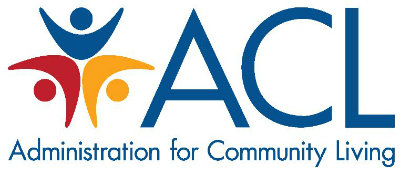 Throughout my career in aging, I have worked for and with community-based agencies. I know how essential these agencies are in helping older people remain well and in their homes by providing and coordinating needed supportive services.
Throughout my career in aging, I have worked for and with community-based agencies. I know how essential these agencies are in helping older people remain well and in their homes by providing and coordinating needed supportive services.
These critical services for older people who have difficulty with daily tasks or younger people with disabilities include home delivered meals, shopping, cooking, bathing, bill paying and/or emotional support, as well as support for their caregivers. In-home assessments determine exactly what is needed for each individual and their family.
The agencies providing these services have always operated on slim budgets funded by federal block grants and philanthropy. Due to funding limits, there are months-long waiting lists for older people who are desperately trying to remain as independent as possible for as long as possible in their own homes.
As our population ages (70 percent of us will have difficulty with daily tasks as we age) and more and more people are living longer with disabilities and multiple chronic conditions, the current network of aging and disabilities agencies will not be able to provide the services that will be needed with the current levels of resources. And this is true even though most workers in community-based agencies already accept entire annual salaries lower than a small Wall Street bonus, simply because of their commitment to the work.
Because the current model of funding cannot meet the nation’s needs, the Administration for Community Living (ACL) is supporting initiatives to fortify and sustain the aging and disability services network. The ACL (which includes the Administration on Aging) serves as the federal agency responsible for increasing access to community supports, while focusing attention and resources on the unique needs of older Americans and people with disabilities of all ages.
The agency has developed several initiatives for aging and disability services through the numerous opportunities that arose with implementation of the Affordable Care Act (ACA). Two sections of the ACA in particular are relevant when it comes to the integration of health and long-term services and supports:
- Section 2602 of the ACA established the Medicare-Medicaid Coordination Office (MMCO), within the Centers for Medicare & Medicaid Services (CMS). Its goals are to “make sure Medicare-Medicaid enrollees [also known as dual eligibles] have full access to seamless, high quality health care and to make the system as cost-effective as possible.
- Section 3022 of the ACA established the Medicare Shared Savings Program, a three-year program enabling providers of services for Medicare beneficiaries to work together in accountable care organizations (ACOs).
Since fall 2012, the ACL has been funding cooperative agreements with the National Association of Area Agencies on Aging (n4a) and the National Association of States United for Aging and Disability (NASUAD). This funding is increasing the capacity of state and community-based aging and disability organizations to play leading roles in the design and delivery of Medicare-Medicaid managed long-term services and supports (MLTSS) in their states.
Through these cooperative agreements, the organizations provide a variety of forms of technical assistance—broadly applicable webinars and readiness tools, directories of business development consultants, and one-on-one consultations—to build the business acumen of aging and disability networks. N4a targets community-based aging and disability organizations, including tribal organizations, in its work, while NASUAD focuses on state aging and disability agencies.
In addition, in spring 2013, ACL convened its first learning collaborative focused on building the business capacity of nine regional networks of community-based organizations. For instance, one network is Elder Services of the Merrimack Valley in Northeast Massachusetts, which is leading a statewide network of Area Agencies on Aging to provide Chronic Disease Self-Management Programs (CDSMP). This proven health-promoting and cost-lowering intervention is being provided to people who need it, with a case rate that makes it possible to grow the service as the demand rises. ACL will convene a second learning collaborative on this vital topic in 2015.
Each network had a clear goal of entering into one or more contracts with integrated care entities to provide services to beneficiaries. Networks in the learning collaborative have received targeted technical assistance from the ACL, federal contractors/grantees, and each other in areas such as creating organizational culture change, conducting market analysis, developing service packages, pricing services, negotiating contracts, and more.
Funding from the John A. Hartford Foundation has supported in-person meetings of this collaborative, as well as direct funding for two of the nine network sites (the Partners in Care Foundation in Los Angeles and the Elder Services of the Merrimack Valley in Massachusetts) to more fully develop toolkits and templates.
Other foundations have also been involved in supporting the initiative, including The SCAN Foundation, the Health Foundation of South Florida, the Health Foundation for Western and Central New York, the Archstone Foundation, the Tufts Health Plan Foundation, and the Altman Foundation. Along with the Retirement Research Foundation, these philanthropies are working with Grantmakers in Aging (GIA) in convening a Funders Learning Circle in order to collaborate on initiatives that will assist agencies serving older adults to remain vital and sustainable.
These initiatives are just the beginning. Much more is needed. We, as a nation, must find ways to support the long-term services and supports that our older adults and people with disabilities need to live the quality of life they deserve.
